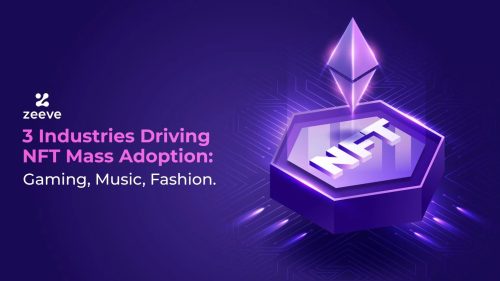BITCOIN DENOMINATION: THE OVERHAUL NEEDED TO INCREASE CONSUMER UNDERSTANDING, ACCEPTANCE AND USE
BITCOIN DENOMINATION:
THE OVERHAUL NEEDED TO INCREASE CONSUMER UNDERSTANDING, ACCEPTANCE AND USE
by John Dean Markunas
Power of Chain Consultancy LLC
“Necessity is the mother of invention.” – Homer
White Paper Outline
I. Introduction – the conundrum
II. White Paper Proposal – BTC redenomination
III. Current Bitcoin Denominated Landscape – the mini/the mega
IV. The Homage to Nakamoto – adding insult to injury
V. Current Bitcoin Unit and Denomination System – a hieroglyphic chart
VI. Introducing The Simpson Method (TSM)
VII. Painless BTC Spending with The Simpson Method
VIII. Conclusion
___________________________________________________________
I. Introduction
“Necessity is the mother of invention.” – Homer
We’ll skip the reputation of the U.S. Federal Reserve system and the arguments for, or against the existence of central banks. Let’s avoid the much debated technological and regulatory issues such as scalability, illegal use and taxation. And we’ll keep the existential tussle between the Austrian School of Economics and Keynesian Economic Theory behind the iron curtain, for now.
Let’s keep it simple. Any bona fide currency needs to meet three basic functions; 1)as a store of value 2) a medium of exchange and 3) a unit of account. Bitcoin is readily viewed as having value. Otherwise, no one would be investing in it. Where it falls short is its function as unit of account (the common measure that people use to record debt and set prices). It falls even shorter as a medium of exchange as most businesses have yet to accept it as payment for goods and services.
Thus, the biggest issue with Bitcoin (Ticker symbol=BTC) [1] today is transactional. That is, its acceptance by society as a unit of account and medium of exchange in everyday use to buy and sell things.
For a currency to be a unit of account and unit of exchange, it must be able to measure the real economic value of an item. And who decides that value? Do you like donuts?
Chocolate glazed donuts at Dunkin Donuts cost about $1.85.
Let’s say that Dunkin accepts BTC. You want to pay in BTC.
What’s the price in Bitcoin?
That same donut would cost you about 4,665 Satoshis. We could figure out what the price of that donut is in Bitcoin with the current metric percentage system (explained below) but these BTC denominations aren’t readily recognized or intuitive such as the US dollar denominations we all know and use (that is, if you’re in the U.S.).
Bitcoin denominations and subsequent recognition of value and price is a conundrum which shuts the gate on consumer and merchant understanding, acknowledgement and use of Bitcoin as the preferred payment currency.
____________________
[1] The basic Bitcoin ticker symbol comes in two flavors: BTC and XBT. BTC is the informal ticker symbol Bitcoin was given shortly after its birth. XBT is its currency code, compliant with the rules of the International Organization for Standardization.
[2] Since 2016, the online gift card application, eGifter, enabled support for Dunkin Donuts BTC cards. Dunkin customers can pay for their donuts and coffee with Bitcoin, in addition to regular modes of payments.
______________________________________________________________
II. White Paper Proposal
The proposal of this paper is to demonstrate that to improve consumer understanding and acceptance of BTC as a currency for everyday transactional use it should be denominated (forgive me BTC purists) along the lines of the US denominated and nomenclated currency. Yes. Like pennies, nickels, dimes, quarters, singles, the five-dollar bill, the Hamilton, the Jackson, the Benjamin and the rest of the Dead Presidents.
A more “denominated friendly” Bitcoin will provide us with a path to easier recognize the prices of products and services in context of Bitcoin’s volatility. In turn, this will help persuade people to leave their debit/credit cards and cash at home or preferably burn them and scatter the ashes on the sacred door steps of central banks. [1]
The subsequent boom in the production and use of BTC debit cards and pre-paid digital currency cards would boom even further. I was also going to say that it would lead to a humongous Bitcoin credit card business (and maybe it would) but that brings back to the kitchen table those legacy, institutional intermediaries and their centralized control and costs – the anathema of the BTC and DLT counter culture.
On the other side of the coin (pun intended), the increase in Bitcoin use with friendlier denominated skies, would provide retailers a huge incentive in setting up shop to accept and process Bitcoin payments. No more cash registers or giving back fiat change. More importantly would be the lower transaction costs.
Bonus time: with increased global acceptance and use, Bitcoin wouldn’t clash or compete with international fiats and their dizzying arrays of values needing arcane Bitcoin translations.
Merchants, accepting BTC, could then expect a sharp increase in global BTC spending – the proverbial hockey stick growth curve. All this of course reflects the patina of Laissez-faire economic theory and the power of DLT. [2] Nothing wrong with a larger slice of the global market pie, especially at the expense of the establishment.
_________________________
[1] A central bank or reserve bank, is an institution that manages the currency and monetary policy of a state or formal monetary union, and oversees their commercial banking system. Central banks possess a monopoly on increasing the monetary base.
[2] Laissez-faire is an economic system in which transactions between private groups of people are free from or almost free from any form of economic interventionism such as regulation and subsidies. DLT – Distributed Ledger Technology.
III. The Current BTC Mini/Mega Denominated Landscape
The Satoshi
Many people aren’t aware that the smallest denomination of Bitcoin is referred to as a “Satoshi”.
A Satoshi, now commonly called a SAT by the Bitcoin intelligencia, has little practical value. It is a meaningless and gratuitous throwaway phrase to show off one’s Bitcoin intellect. I’m guilty of that. Sometimes when asked if I’ve invested in Bitcoin, I may somewhat flippantly and nonchalantly say “Yea, I own a few Satoshis.” When in fact, I don’t own any. Of course, I’d rather be saying “Yea, I own a few Bitcoins”. Unfortunately, I can’t say that either. Just sayin’.
The Satoshi ratio is 100 million SATs to 1 Bitcoin. At a digital value of 0.00000001 you can readily grasp the trivial and insignificant value of a SAT. Whether a BTC is worth US$35,000 or US$350,000, the Satoshi isn’t worth the breath pronouncing it, but it sounds cool.
Today, a staggering 100,000 SATS might buy you a couple of dinners at Olive Garden, (drinks not included). Satoshi/US fiat conversion arithmetic isn’t easy to do so here’s a nifty conversion link https://www.btcsatoshi.com/ Check it out. You’ll readily grasp the SAT insignificance I previously highlighted.
The Megabit
Many people aren’t aware of the largest denomination either, the “Megabit”. This denomination is listed as 1,000,000. (See chart below). Whoa, what kind of mega BS is this? Maybe when BTC was trading at $0.008 in August 2010 there may have been a place for it. But even back then, that was an $8,000 digital coin. Steep and useless for typical, daily transactions.
IV. The Homage to Nakamoto: adding insult to injury
The term “Satoshi” was named after, and as homage to Satoshi Nakamoto, the genius behind the Bitcoin creation. Whoever she, he or they are (or were) should be insulted. A more appropriate homage I think would be the other way around.
With 1 BTC being the largest denomination with the absolute highest value, the term “Bitcoin” should have been named after Nakamoto (instead of the Satoshi). This would better reflect Nakamoto’s Napoleon or Joan of Arc greatness. (There is whispering of sainthood.)
On the other hand, the smallest unit, the miniscule Satoshi (0.00000001) should be called a “Bitcoin” since it’s just really a (very) little bit of something. Makes sense.
V. Current Bitcoin Unit and Denomination System
Bitcoin is denominated in a metric system of percentages, divisible down to eight (8) decimal places. The ultimate goal with this % scheme was to allow it to “collaborate” with global fiat currencies.
The chart below outlines the current most commonly referred-to measurements, ranging in value from the smallest amount of bitcoin (Satoshi) to the greatest (Megabit – MBTC).
But this chart is abstruse and difficult to relate to. What would be the price in BTC of a bouquet of flowers or a new smart phone or a Snickers candy bar using this chart? I know of no one using or talking about these denominations, even the aforementioned “Satoshi” intellectuals.
Denomination |
Abbreviation |
Familiar Name |
Value in BTC |
*Satoshi |
SAT |
Satoshi |
0.00000001 |
Microbit |
uBTC |
Microbitcoin or Bit |
.000001 |
Millibit |
mBTC |
Millibitcoin |
0.001 |
Centibit |
cBTC |
Centabitcoin |
.01 |
Decibit |
dBTC |
Decibitcoin |
0.1 |
Bitcoin |
BTC |
Bitcoin |
₿1 |
Decabit |
daBTC |
Decabitcoin |
10 |
Hectobit |
hBTC |
Hectobitcoin |
100 |
Kilobit |
kBTC |
Kilobitcoin |
1000 |
*Megabit |
MBTC |
Megabitcoin |
1000000 |
Source: bitsusd.com |
Confusing? It’s like hieroglyphic chart or a periodic table of elements we had to memorize in high school chemistry class.
*If you took a Satoshi into consideration (0.00000001) and use the base unit of US$60,000, its value would be 0.0006¢.
However, the smallest denomination in The Simpson Method, the Skinner (further described below) compensates for the SAT’s inconsequential, useless value.
*If you took a Megabit into consideration. (1,000,000 BTC) and use the base unit of US$60,000, its value would be US$60,000,000,000 (6e10). Wow, how useful is that?
However, the largest denomination in The Simpson Method, the Homer, (further described below) replaces and compensates for the hyper inflated and useless Megabit.
– Therefore, no Satoshi-type or Megabit-type subunits are found in The Simpson Method! –
So, the tipping point for BTC mass adoption is a denominational scale that is simple, understandable and palatable for the consumer – the almighty customer – which leads us to TSM.
VI. Introducing The Simpson[1] Method (TSM)
“We may all be here, but we’re not all there”. – Duke Devlin
To cut through the mini and mega BS, I suggest a far simpler structure for consumers purchasing products and services with BTC with retailers pricing them in Simpson denominations.
The purpose of this denomination system, called The Simpson Method, is to parallel the U.S. fiat dollar denominations schematic. This arrangement recognizes prices of products with a friendlier, more memorable and more digestible system – where pricing readily reflects the real percentage value of a Bitcoin, related to, but not pegged to the US dollar.
The Simpson Method
Here is proposed overhaul, a chart with standardized, easily remembered denomination names:
Denomination |
Abbreviation |
Familiar Name |
% Value of Denominated BTC |
XValue of 1 BTC in US$(volatile/variable)ex. 60,000 USD |
DenominationsUS$Equivalent |
|
|
|||||
Homer |
HO |
Homer |
1.0 (base unit) |
60,000 |
60,000.00 |
Bart |
BA |
Bart |
0.83333333 |
60,000 |
50,000.00 |
Marge |
MA |
Marge |
0.16666667 |
60,000 |
10,000.00 |
Lisa |
LI |
Lisa |
0.01666667 |
60,000 |
1,000.00 |
Barney |
BAR |
Barney |
0.00166667 |
60,000 |
100.00 |
Apu |
AP |
Apu |
0.00083333 |
60,000 |
50.00 |
Burns |
BU |
Mr. Burns |
0.00033333 |
60,000 |
20.00 |
Moe |
MO |
Moe |
0.000016667 |
60,000 |
10.00 |
Nelson |
NE |
Nelson |
0.00008333 |
60,000 |
5.00 |
Skinner |
SK |
Prof. Skinner |
0.00001667 |
60,000 |
1.0 |
Source: Power of Chain LLC |
Of course, with widely fluctuating base unit BTC values, a simple algorithm will be needed to adjust values to keep pricing constant. For example, if the illustrative BTC/US$60,000 base line value were to suddenly devaluate by 50%, the BTC % metrics will need to adjust by half.
This shouldn’t be hard to do. I could probably create this algorithm in Lotus1-2-3,[2] in an Excel spreadsheet or maybe on the back of a paper napkin. [3]
Example, calculation of a new Bart:
$30,000 (new base) x 0.41666666 (new % of value) = $25,000 (value of a new Bart)
Example, calculation of a post-devaluation Starbucks Cappuccino:
$30,000 (new base) x 0.00003354 (algorithmically adjusted %) = $1.00 x 3.7 =
-
Skinners (Same price, pre devaluation, when BTC baseline unit was $60,000!!)
__________________________________________
[1] Simpson is an English/Scottish medieval baptismal name meaning ‘son of Sim’, a name of great strength, antiquity and enlightenment. A Simpson patrilocal tribe eventual settled in the town of Springfield, USA.
[2] Lotus 1-2-3 is a discontinued spreadsheet program from Lotus Software. It was the first killer application of the IBM PC, was hugely popular in the 1980s.
[3] A napkin is a serviette or face towelette. A paper napkin, made of paper tissue is intended to be disposed of after use.
VII. Painless BTC Spending with The Simpson Method
The beauty of the new method is that you don’t need to think in decimal points or percentages. Pricing is built in to each unit of account from the Homer to Skinner.
Referencing the TSM chart above, Bitcoin/fiat translation and spending becomes painless using this easy-to-remember (Caveat: once memorized) TSM denomination acronym: HBMLBABMNS
Here are some potential real-world examples using The Simpson Method:
Cappuccino Grande at Starbucks? (1)
Sir, that’ll be 3.95 Skinners
. 
Large pizza from Pizza Hut (2 toppings)
Only 1 Nelson/3 Skinners. Thank you.

Oster Master Series Blender w/ Blend-N-Go Cup/Amazon.com
3 Burns/1 Nelson (shipping not included)
Shipping: 1 Moe/3 Skinners
Total cost: 3 Burns/1 Moe/1 Nelson + 3 Skinners

Need a new refrigerator? Here’s your BTC price at Home Depot for a new LG Electrolux
Original price 1 Lisa. Now on sale with a 2 Barney discount!
New Price: only 8 Barneys

How about a new car?
This 2021 BMW 440i, out-the-showroom-door price:
1 Bart/2 Marges + 4 Apus
or
1 Homer /1 Marge + 2 Lisas
or
Only 1.2 Homers

___________________________
[1] A cappuccino is an espresso-based coffee drink that originated in Italy, and is traditionally prepared with steamed milk foam. At certain coffee shops in the U.S., it is considered an overpriced coffee drink. Americans love to wait in long lines to buy o
VIII. Conclusion
Global mass adoption of Bitcoin along with rejection of central bank authority falls under the purview of the 1st of the Seven Laws of Spiritual Success, the Law of Pure Potentiality – Anything goes. Anything is possible.
It culminates with the 7th Law of Spiritual Success, the Law of Dharma or purpose in life. A DLT life. How cool is that?
Alas, the wheels of the Gods grind slowly.
Homer was right: necessity is the mother of invention. [1]
Duke Devlin was also right: we may all be here, but we’re not all there. [2]
________________________________________
[1] Who is Homer? That depends on which generation you’re from.
[2] Duke Devlin: local legend of “Woodstock” fame and long-time tour guide of the 1969 Woodstock Musical Festival site and museum. A Woodstock guru.
_____________________________________________________________________________________________
If you found this white paper useful and/or interesting, or not – feel free to make a BTC donation to the author’s wallet below. Satoshis, Microbits, Millibits all accepted. A Centibit? I’ll come over to your house to mow your lawn, wash your dishes and wax your car.
BTC Wallet: 3Q6vsorYMzjSGyUSBMk4jg3itXw6rg9jgm
Minimum recommended Satoshi donation: 24,800
If you need help converting, here’s that nifty Satoshi conversion link again: https://www.btcsatoshi.com/
_____________________________________________________________________________________________
Copyright 2021
Reproduction or use of any portion this material is expressly prohibited without prior written consent of the author along with a one-time, ₿2 Millibit payment.
The Author
John Dean Markunas is the Founder and Principal Consultant of Power of Chain LLC, a boutique blockchain, proptech and crypto real estate industry consulting and advisory firm based in Fort Lauderdale, Florida. Mr. Markunas can be reached at jmarkunas@PowerOfChain.com and can sometimes be found wondering the beaches of South Florida.







Responses